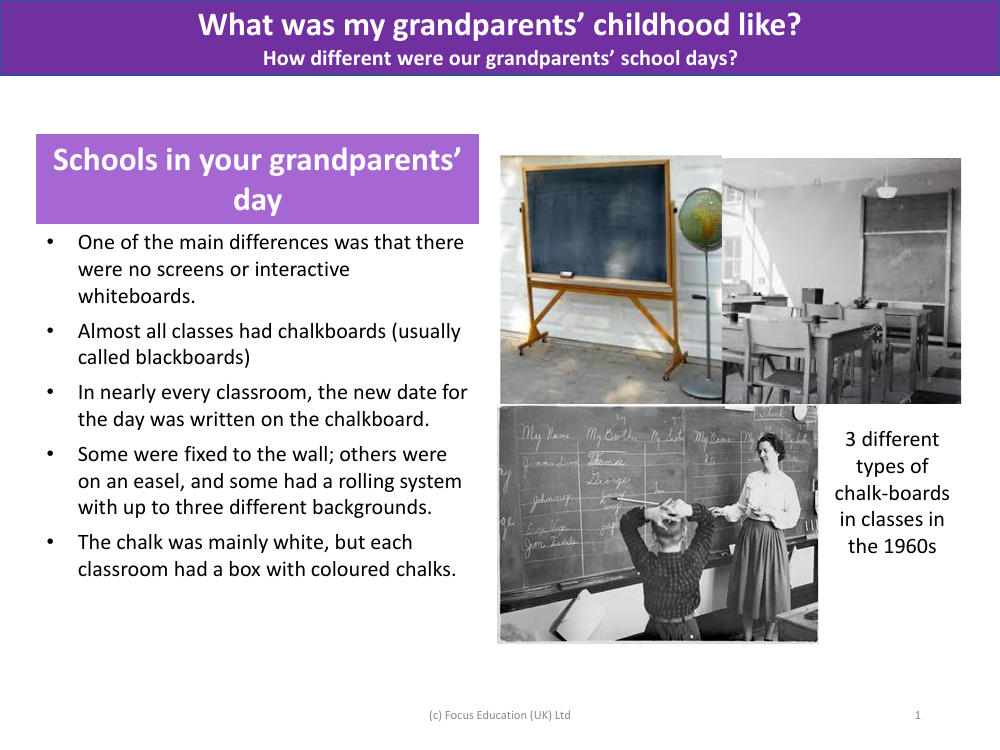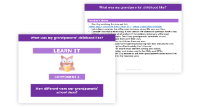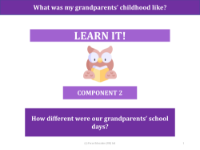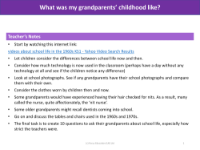Schools in your grandparents' days - Info pack

History Resource Description
Schools during your grandparents' era were markedly different from the technology-rich classrooms of today. One of the most noticeable differences was the absence of screens and interactive whiteboards. Instead, classrooms were equipped with chalkboards, often referred to as blackboards, where the day's date was prominently displayed. These boards varied in design, with some mounted on walls, others on easels, and a few featuring a rolling system that allowed for multiple backgrounds. Chalk was predominantly white, but classrooms were typically supplied with a box of coloured chalks for various uses. This simple yet effective tool was central to the daily teaching and learning activities.
When it came to school attire, most primary schools of the time did not enforce a uniform policy, so children wore their everyday clothes. Another significant aspect of the school day was the provision of free milk for all children. This initiative was introduced to improve the health of children who had poor diets post-war, with the aim of strengthening their bones. The cessation of free milk led to widespread protests. Health checks were also a routine part of school life, with 'nit nurses' regularly visiting to inspect for head lice, and dentists checking and treating children's teeth, with fillings being a common necessity. Classroom desks often featured lids for storage and inkwells for pens, necessitating the use of blotting paper to prevent ink smudges on work.
Classroom layouts and disciplinary practices also evolved over time. Initially, desks were arranged in rows, with talkative or mischievous students seated at the front, while well-behaved children were placed at the back in what was a typically silent environment. However, in the 1960s, there was a shift towards a more interactive setup, with desks grouped together and a livelier atmosphere encouraged. These changes reflected a broader educational transformation that your grandparents may recall, marking a departure from the stricter, more traditional classrooms of earlier decades.




